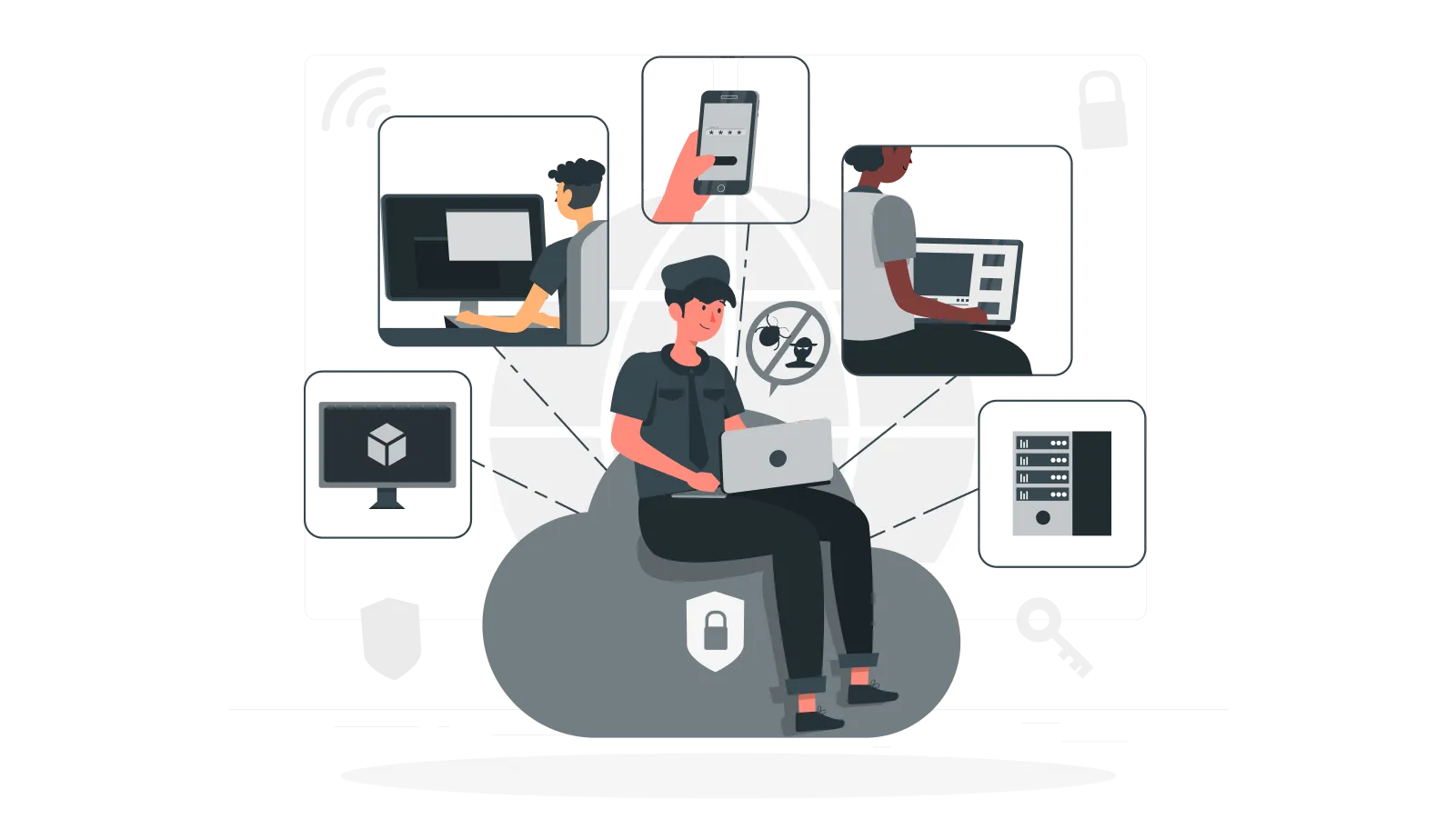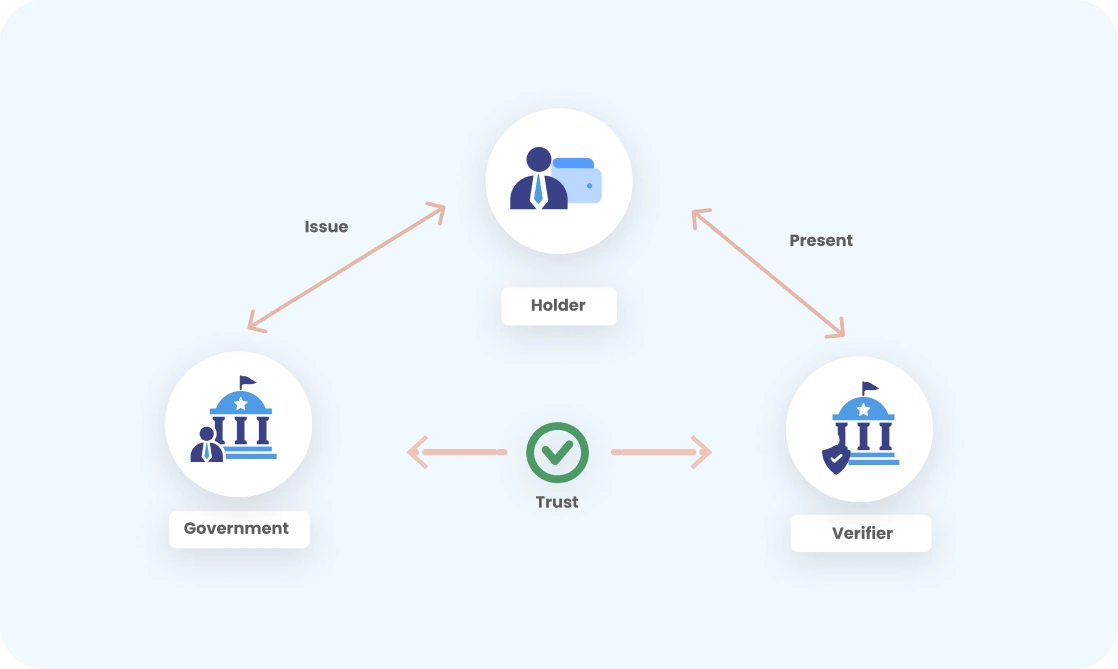Learn what Cloud Security Posture Management is and how it can help you:
- Gain visibility into your cloud environment
- Identify and fix security misconfigurations
- Proactively address security threats
- Ensure compliance with regulations
Read this blog to take control of your cloud security posture!
What is Cloud Security Posture Management (CSPM)?
Did you know that approximately 125 million user records were exposed by over 900 improperly configured websites in March 2024? This incident is just one of many that show how difficult it is for companies to secure their cloud environments.
Fortunately, there's a solution: Cloud Security Posture Management (CSPM). It is a security practice that helps businesses fix any security weak spots in their cloud setup and keeps their cloud apps and data safe.
CSPM cloud security prevents misconfigurations, detects & mitigates threats, and solves non-compliance issues across various cloud platforms, including PaaS, IaaS, and SaaS. By integrating with a CASB solution, CSPM can look out for the entire cloud setup, check for risks, spot any unauthorized access, and do a lot more to make using the cloud smooth and safe.
Keep reading to discover how CSPM can help protect your cloud environment.
Why is CSPM important?
As businesses start using the cloud more, they must make sure their security policies are in check. Cloud Security Posture Management is super important for cloud admins who are always on the lookout for security risks. Traditional security practices that involve manual processes are inadequate in this context. They fail to keep pace with the rapid deployment cycles and dynamic changes within cloud environments.
Following are the reasons why organizations should use CSPM cloud security:
Lack of visibility: Businesses struggle to keep track of their cloud technologies, leading to security risks, compliance issues, and wasted IT budgets. Poor visibility means potential problems and misconfigurations may go unnoticed. This can amplify other IT challenges and slow down digital growth. CSPM gives businesses clear visibility so they can efficiently scale and manage their cloud infrastructure.
Compliance challenges: Manual compliance processes cannot keep up with rapidly scaling cloud architectures. Companies need to always check that they're following important guidelines and regulatory frameworks, including NIST CFS/SP/800-171/800-53, PCI DSS, SOC2, HiTrust, and CIS benchmarks for cloud vendors such as Azure, AWS, GCP, and Alibaba, to avoid big fines. CSPM helps companies automatically ensure they're keeping up with these rules and their own special ones.
Lack of context: Companies need better tools to understand and prioritize these mistakes. CSPM cloud security provides them with context around identified misconfigurations to prioritize or focus on the misconfigurations that pose a risk to their environment. It can help organizations reduce alert fatigue and only address legitimate cloud concerns.
Operational effectiveness: Companies are using modern methods like DevOps to enhance cloud services, but old security tools often can't keep up. Security checks are slow compared to the speedy development processes. Cloud Security Posture Management solves this by integrating security early in the software creation process, known as 'shift left'. This allows developers to understand and fix security issues quickly. The result is fast and safe software development.
Challenges of complex multi-cloud architectures: Cloud infrastructure lets businesses grow their online services easily but it can complicate things. Adding new apps and resources quickly makes the cloud setup complex. CSPM cloud security helps find and fix security issues in these expanding cloud systems. Managing this growth manually is hard and risky. CSPM makes using cloud services safer and more efficient for companies.
CSPM helps solve these problems. It keeps an eye on cloud security all the time and makes sure that security can keep up with all the new stuff happening in the cloud. It helps prevent policy misconfigurations to prevent unauthorized access to the cloud and set up new security policies to prevent data breaches in their environment.
How does CSPM work?
Following CSPM practices ensures cloud data protection. Let's break down how it works into simple steps:
Finding Assets: Cloud Security Posture Management (CSPM) first looks around your cloud and notes down everything it finds. This could be like computers in the cloud (virtual machines), places where data is stored (storage buckets, databases), and apps running in isolated spaces (containers).
Checking Configurations: Once assets are identified, CSPM cloud security compares the configurations to what’s considered safe and the rules that should be followed. It checks for any misconfigurations, such as open ports, weak access controls, or unencrypted data, which could pose security risks.
Threat Detection: Cloud Security Posture Management keeps an eye out for any suspicious activity and potential security threats. It employs anomaly detection techniques to identify unusual behaviors, such as unauthorized access attempts, unusual data transfers, or configuration changes indicative of a security breach.
Policy Enforcement: CSPM cloud security makes sure all security policies and compliance requirements are enforced across the cloud infrastructure. This includes encryption protocols, resource permissions, and access controls, to mitigate security risks effectively.
Automated Remediation: In case of security incidents or policy violations, CSPM cloud security can fix such issues promptly. This could include applying security patches, revoking access from someone, rolling back changes to keep safe, reducing the response time, and minimizing the damage of security incidents.
Continuous Monitoring and Reporting: Cloud Security Posture Management keeps an eye on cloud safety all the time. It generates alerts for security incidents, compliance violations, or deviations from security policies, enabling security teams to take immediate action.
Benefits of CSPM
Following Cloud Security Posture Management (CSPM) practices bring a lot of benefits for businesses moving to the cloud, such as:
Centralized Security: It makes it easier for businesses to spot security risks early and fix them through a simple, one-stop dashboard. CSPM keeps a close eye on cloud services, who gets in, and what they do, all in real time. This means any security issues can be caught and dealt with quickly, keeping everything running smoothly and securely.
Compliance Ready: Businesses can use CSPM cloud security to easily meet important rules and safety standards like HIPAA, GDPR, ITAR, PCI DSS, and ISO 27001. It lets companies apply safety rules, keep an eye on how well they're doing with these rules, and create detailed reports to make sure they're following all the necessary policies.
Reduced Risk of Data Breaches: By identifying and addressing cloud vulnerabilities, misconfigurations, and keeping out unwanted visitors in the infrastructure, CSPM cloud security reduces the risk of data breaches and cyber-attacks. It helps protect important information and creative ideas stored online, keeping your business reputation safe and preventing expensive security problems.
Deep Visibility: CSPM cloud security gives you a clear look at how safe your cloud space is. It helps security teams get a full picture of what’s happening in the cloud, from resources being used to who’s accessing them. Businesses can keep a tight grip on their cloud setup, making sure security rules are followed and quickly dealing with any security problems.
Cost Effective: Make the best use of cloud services while keeping costs low related to security. CSPM blocks security problems before they happen, making sure that cloud services are used in the smartest way possible. This way, CSPM helps businesses save money by avoiding the costs of security breaches, breaking rules, and not using resources efficiently.
Streamlined Security Operations: Cloud Security Posture Management makes security easier by automating checking, fixing, and monitoring security issues. This means less hands-on work and smoother security tasks. It gives security teams clear advice and important warnings and fixes problems automatically, making their work more productive and effective.
How to Choose the Right CSPM Vendor?
While choosing a Cloud Security Posture Management (CSPM) vendor, you need to be mindful of some factors to ensure you select the best option for your company.
Here’s a list of points you must keep in mind:
Check Security Features: Find out the security features and offerings by the Cloud Security Posture Management (CSPM) vendor. You’ll want to choose one with features like real-time monitoring, configuration assessment, automated threat detection, vulnerability management, and compliance policy enforcement. Make sure CSPM cloud security offers strong protection measures to keep your cloud apps and stuff safe.
Identify Scalability: Check how well Cloud Security Posture Management can grow with your organization's cloud infrastructure. It’s important to see if it can smoothly handle and protect large-scale cloud infrastructures across multiple cloud platforms and regions with peak performance capabilities, all without compromising on cloud security.
Custom Integrations: Make sure the Cloud Security Posture Management works well with your current security tools and processes. It's important that it can connect smoothly with your existing cloud platforms, Security Information and Event Management (SIEM) systems, identity and access management (IAM) solutions, and other security tools. This helps make your security tasks easier and gives you better insight and control.
Verify Compliance Inclusion: Ensure that the Cloud Security Posture Management tool complies with relevant regulations and security standards, such as GDPR, ISO 27001, HIPAA, ITAR compliance, PCI DSS, and the NIST Cybersecurity Framework, that are significant to your organization. Check that the tool offers helpful reports on compliance, tracks changes accurately and has smart ways to fix issues, helping you keep up with regulations smoothly.
Know Usability: Check out how user-friendly the CSPM tool is, focusing on how easy it is to set up, tweak, and handle. Pick a tool with a clear and simple layout, dashboards you can change to suit your needs, and clear tips that help security teams make smart choices and quickly deal with any security issues.
Performance and Reliability: See how well the CSPM cloud security works in real-world situations. It should be always available, grow with your needs, and be strong enough to keep watching and protecting your cloud data without any breaks or problems.
Support and Services: When picking a CSPM vendor, think about the help and services they offer. Look for a vendor with quick and helpful support, easy-to-understand guides, and thorough training programs. It's great if they also have a lot of knowledge about cloud security. This will make setting up and using CSPM much smoother for you.
Pricing: Make sure to look into the cost and how much you'll pay for the CSPM cloud security. Think about things like the price for signing up, different plan options, and any extra fees for special features or services. The prices must be clear, steady, and fit well with what you can afford and what you need.
Future of CSPM Security
As more companies use cloud services for their work, CSPM is becoming super important for keeping things safe and sound. In the future, CSPM is going to get even better by working closely with other security tools to predict risks before they happen and automating more tasks to keep security tight without needing to constantly check on it. It's going to be key for companies to keep up with the latest in CSPM to make sure their cloud stuff stays safe.
The need to keep cloud services secure, in line with rules, and running smoothly is a never-ending task that needs constant attention. With cloud technology getting more complex, CSPM's job of protecting against new security threats, ensuring rules are followed, and clearly showing how secure a cloud service is more important than ever. CSPM is your friend in making sure your cloud services are not just secure but also working in the best way possible.
Ready to Elevate Your Cloud Security Game?
Don't wait for a security breach to reveal the vulnerabilities in your cloud environment. Take proactive steps to safeguard your cloud assets with miniOrange Cloud Security Posture Management (CSPM).
Our team of experts is ready to assist you in selecting the perfect CSPM tools tailored to your organization's unique needs and challenges.
So, what are you waiting for? Drop us an email at info@xecurify.com and we will get right back to you!
Reference links
Check out more resources by miniOrange for SASE security.





Leave a Comment